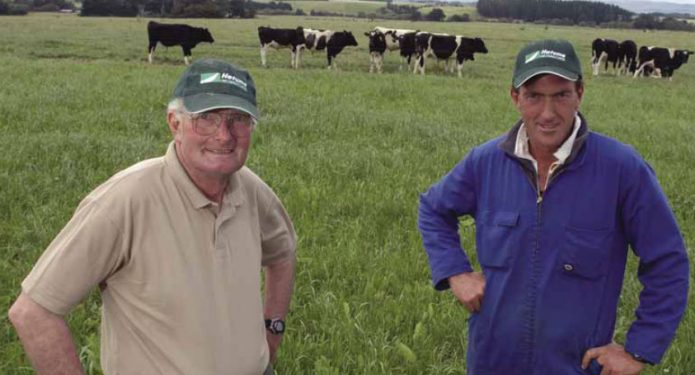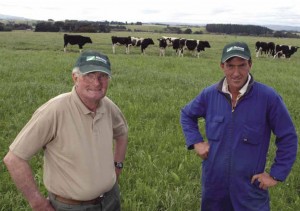You must be logged in to post a comment.
Archive

‘Lime has always played a vital role in farming. When I was a kid I was very aware of how much lime was being applied to farms,’ recalls Don. ‘I can still remember the stockpiles of lime at the side of the railway line at Taonui.’
| Farm Type | Dairy |
|---|---|
| Farm Size | 222ha (121 h, 20ha run-off, 81ha leased) |
| Years of dicalcic use | 29 |
| Application | Dicalcic / Potash / Sulphur @ 500kg/ha + 500kg/ha Lime |
‘My father, on frequent occasions, used to remind us of the many tons of bagged lime he carted from railway trucks to farms in the district. Some of this was mixed with superphosphate on the floor of sheds, then spread by various means, a lot of it spread on the hills by hand. The whole process must have been damned hard work, and if they didn’t see results with it, they would never have carried on. That’s where my appreciation for what Hatuma do to manufacture the dicalcic came from. This was followed up later when the Colyton Young Farmers Club went for a trip to Hatuma. After a tour of the plant, Joe Topp gave us a very stern lecture – the answer lay in nurturing the soil – today called sustainability – followed by some much appreciated hospitality!’
There’s a generational change happening where the crucial old practices are being discarded. Having a hay contracting business, the topics of fertiliser and grass growth are often discussed. Perhaps I am a little one-eyed, but we do see the results of various fertiliser applications. I have a genuine concern that there is nowhere near enough lime being applied for what the modern farmer is expecting to get from his soil. I’ve seen farmers move away from regular liming, substituting it for high analysis fertiliser, and for the first couple of years they have achieved good results based on what organic matter they’d built up. I believe that the time is rapidly approaching when some of these farms are going to have to start their build-up cycle again.
Some people spread lime every four or five years, but I believe it should be applied every year, if possible. I well remember properties in the district that had rushes almost to the top of the fences. Lime played a big part in transforming this land – I hope the rushes don’t get a chance to come back.



 520 Maharakeke Rd, Waipukurau
520 Maharakeke Rd, Waipukurau

 0800 80 65 65 /
06 858 8567
0800 80 65 65 /
06 858 8567 06 8588018
06 8588018
Leave a Reply